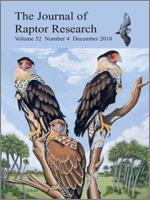Hybridization, the interbreeding of different species, plays an important role in several evolutionary processes but can have detrimental effects on the species involved, including extinction. We documented increased levels of hybridization between two Clanga species (Lesser Spotted Eagle [Clanga pomarina] and Greater Spotted Eagle [C. clanga]), following a drastic change in the water regime of their habitats in the Biebrza River Valley, Poland. Due to broader combined food-niches of the parent species, we hypothesized that hybrid nestlings should have similar or better nutritional condition when compared to the nestlings of the pure-species pairs. Ptilochronology of the feathers of 119 nestlings (54 Lesser Spotted Eagle, 42 Greater Spotted Eagle, 23 hybrids), and a comparison of the growth and fault bars among the groups suggested a similarity in their nutritional status. However, the number of fault bars present underscored an existing problem in feeding conditions for both pure and hybrid species, which is probably an effect of environmental changes, particularly in the water regime, in the Biebrza River Valley. Our results suggest that hybrid nestlings are potentially available for recruitment into the breeding populations of the two sibling species and their hybrids, although their fertility has yet to be thoroughly investigated. The evolutionary consequences could be a coalescing of the species into one with more generalist environmental requirements that will allow better exploitation of the changing habitats.
BioOne.org will be down briefly for maintenance on 17 December 2024 between 18:00-22:00 Pacific Time US. We apologize for any inconvenience.
How to translate text using browser tools
1 December 2018
Nutritional Condition of Hybrid Nestlings Is Similar To That of Pure-Species Offspring of Spotted Eagles (Clanga clanga × C. pomarina)
Grzegorz Maciorowski
ACCESS THE FULL ARTICLE

Journal of Raptor Research
Vol. 52 • No. 4
December 2018
Vol. 52 • No. 4
December 2018
Clanga clanga
Clanga pomarina
conservation
Greater Spotted Eagle
hybrid
Lesser Spotted Eagle
raptors




